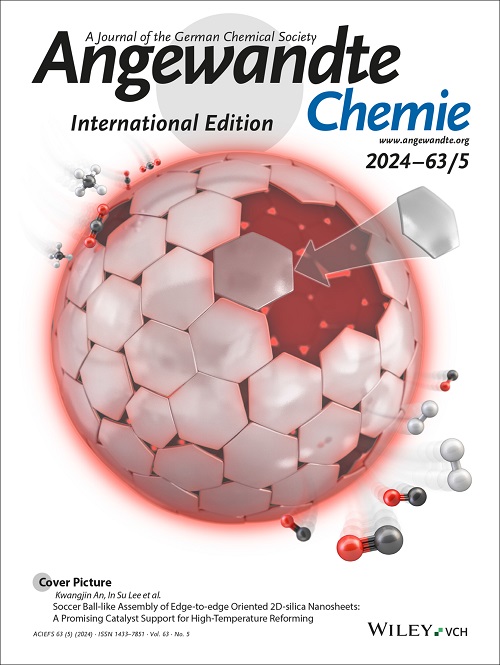Deciphering the Crystallographic Effect in Radially Architectured Polycrystalline Layered Cathode Materials for Lithium-Ion Batteries
IF 16.1
1区 化学
Q1 CHEMISTRY, MULTIDISCIPLINARY
引用次数: 0
Abstract
Layered oxide cathode materials with primary-secondary architecture face challenges of inhomogeneous Li+ diffusion and chemomechanical degradation due to misorientations between equiaxed primary particles. While a radial architecture, featuring elongated grains, is widely believed to enhance diffusion, it does not address the root cause of chemomechanical failure—crystallographic misorientation. The impact of crystallography on the electrochemical performance of radially architectured secondary particles, compared to conventional designs, remains poorly understood. Here, by combining transmission Kikuchi diffraction with multimodal characterization, we decipher the crucial role of crystallography in the performance and stability of polycrystalline high-Ni layered oxide cathode materials. Contrary to the conventional belief that a preferential texture induced by the radial architecture is the key to performance enhancement, we uncover that the radial architecturing primarily alters the misorientation distribution by introducing substantially increased low-angle grain boundaries and twin boundaries that significantly mitigate chemomechanical cracking and phase degradation. This crystallographic refinement facilitates enhanced Li+ diffusion between primary particles, ultimately boosting the rate capability and long-term stability of the cathodes. By quantitatively uncovering the crystallographic influence on performance, this work provides a new avenue for optimizing Li+ diffusion kinetics and chemomechanical resilience in polycrystalline cathode materials through crystallographic engineering.解析径向结构多晶层状锂离子电池正极材料的晶体学效应
具有原生-次生结构的层状氧化物阴极材料面临着锂+不均匀扩散和化学机械降解的挑战,这是由于等轴原生颗粒之间的取向错误造成的。虽然人们普遍认为以细长晶粒为特征的径向结构能增强扩散,但它并不能解决化学机械失效的根本原因--晶体学取向错误。与传统设计相比,人们对晶体学对径向结构二次粒子电化学性能的影响仍然知之甚少。在这里,通过将透射菊池衍射与多模态表征相结合,我们揭示了晶体学在多晶高镍层状氧化物阴极材料的性能和稳定性中的关键作用。传统观点认为,径向结构诱导的偏好纹理是性能提升的关键,与此相反,我们发现径向结构主要通过引入大量增加的低角度晶界和孪晶界来改变错向分布,从而显著减轻化学机械开裂和相降解。这种晶体学细化有利于增强原生粒子之间的 Li+ 扩散,最终提高阴极的速率能力和长期稳定性。通过定量揭示晶体学对性能的影响,这项研究为通过晶体学工程优化多晶阴极材料的 Li+ 扩散动力学和化学机械弹性提供了一条新途径。
本文章由计算机程序翻译,如有差异,请以英文原文为准。
求助全文
约1分钟内获得全文
求助全文
来源期刊
CiteScore
26.60
自引率
6.60%
发文量
3549
审稿时长
1.5 months
期刊介绍:
Angewandte Chemie, a journal of the German Chemical Society (GDCh), maintains a leading position among scholarly journals in general chemistry with an impressive Impact Factor of 16.6 (2022 Journal Citation Reports, Clarivate, 2023). Published weekly in a reader-friendly format, it features new articles almost every day. Established in 1887, Angewandte Chemie is a prominent chemistry journal, offering a dynamic blend of Review-type articles, Highlights, Communications, and Research Articles on a weekly basis, making it unique in the field.

 求助内容:
求助内容: 应助结果提醒方式:
应助结果提醒方式:


